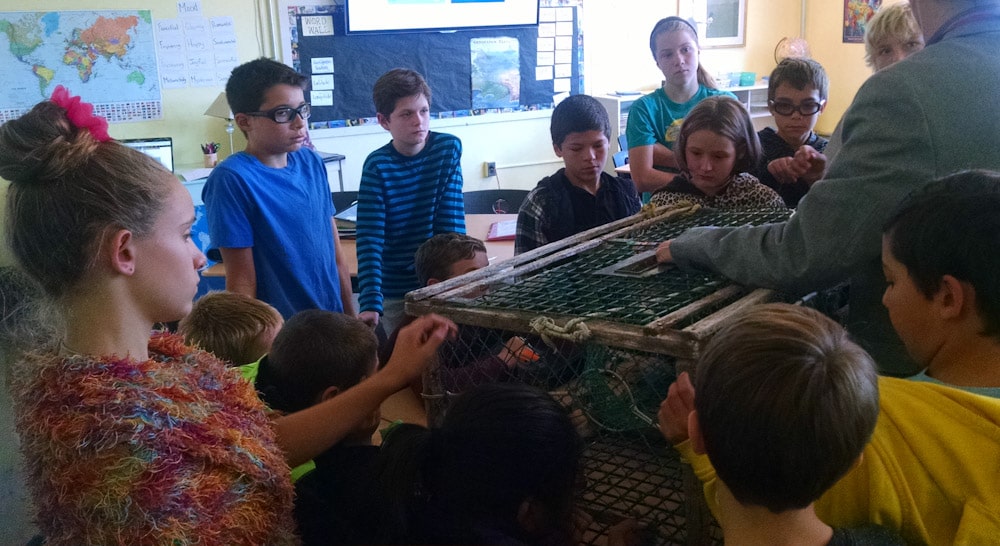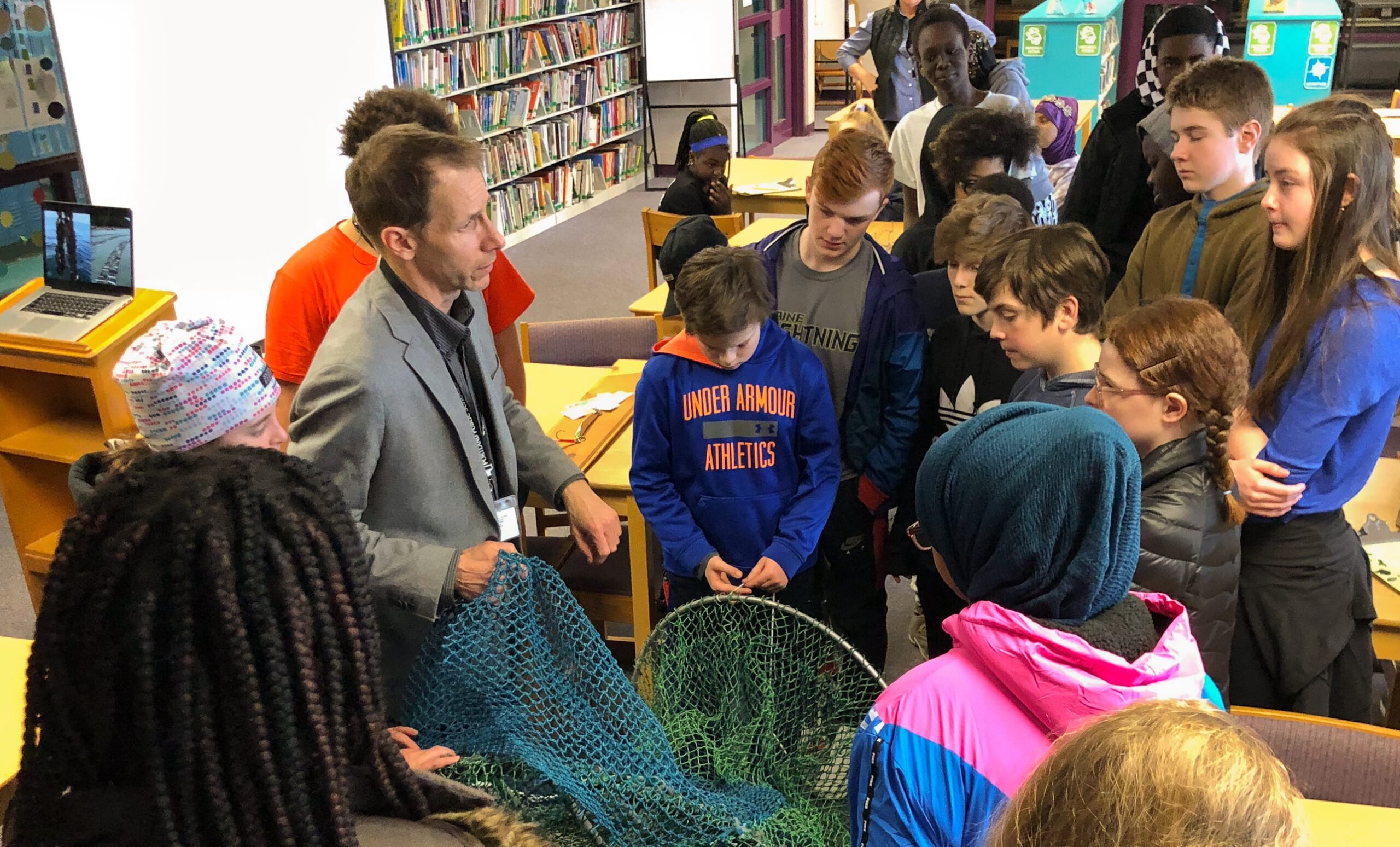Most middle school students’ eyes pop wide open when they hear that between 65% and 90% of the seafood we eat in this country is imported, particularly when they learn how much seafood we harvest annually. They dive into the conversation as they begin to see the implications of that dynamic on seafood.
Middle school students are curious about their connection to natural resources and the food they eat, and they like to hear that their personal choices matter. One Fish Foundation visits provide an engaging, hands-on forum to explore issues ranging from gear type, to abundance, changes in the Gulf of Maine, and how their decisions have an impact on local seafood systems.


Most middle school students’ eyes pop wide open when they hear that between 65% and 90% of the seafood we eat in this country is imported, particularly when they learn how much seafood we harvest annually. They dive into the conversation as they begin to see the implications of that dynamic on the seafood they eat.
Middle school students are curious about their connection to natural resources and the food they eat, and they like to hear that their personal choices matter. One Fish Foundation visits provide an engaging, hands-on forum to explore issues ranging from gear type, to abundance, changes in the Gulf of Maine, and how their decisions have an impact on local seafood systems.
Objective
A One Fish Foundation visit to your classroom allows students to:
- Handle different gear types, from lobster traps to gill nets, while discussing issues like bycatch, and ecological and social impacts;
- Discuss the implications of the rapidly warming Gulf of Maine on seafood;
- Handle live green crabs and perhaps a dead black sea bass while discussing invasive species and predator-prey relationships;
- Learn about some of the benefits and drawbacks to aquaculture; and,
- Engage in interactive discussions about how they can use this knowledge to make informed decisions about the seafood they eat.
Results
Students will be empowered with basic knowledge to help them make smarter decisions. They’ll learn to ask important questions:
-
Where was it caught?
-
How was it caught?
-
If it was farm raised, were any hormones or antibiotics used?
-
Is this an abundant species?

One Fish Foundation will work with you to customize a lesson plan to tailor content to meet students where they are in your curriculum. Depending on the age group, we can have a mix of hands-on gear demonstrations and slides to illustrate different harvest types and their ecological implications, such as bycatch. We’ll also explore some of the ways fishermen and gear manufacturers are working to minimize bycatch. We’ll couch this information in real-world examples that clearly highlight students’ relationship to seafood and how their decisions matter. They leave feeling empowered knowing their decisions make a difference.
“Colles reinforced the science curriculum while presenting relevant, interesting information to my students on sustainable fisheries. He connected his conversation to our environmental study of invasive species. It was extremely helpful for my students to hear another voice present information connecting our studies to the real world.”

